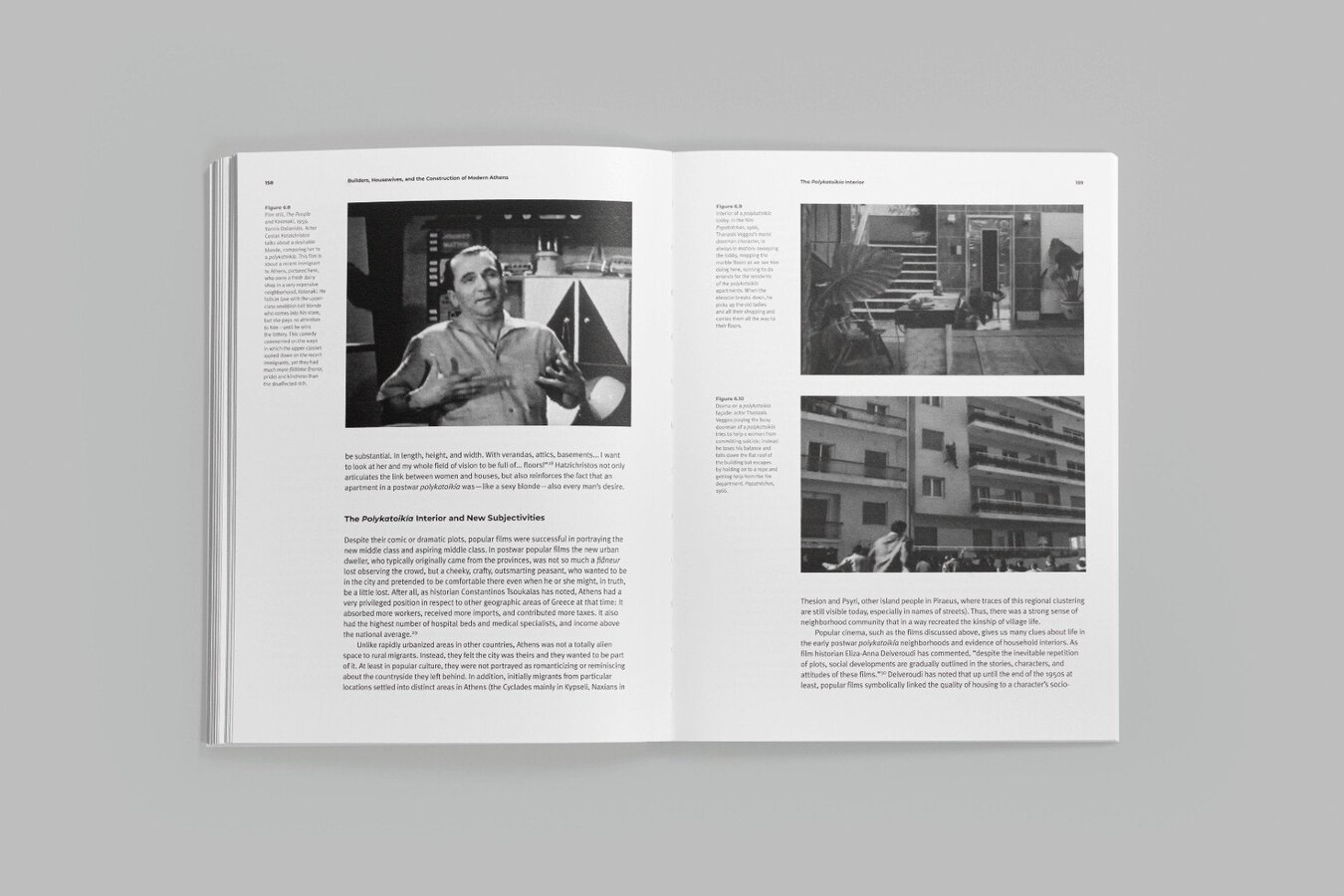Your cart is currently empty.









1
/
9
Builders, Housewives and the Construction of Modern Athens
€ 32.00
Athens’ most distinctive building type, “polykatoikia”, and its different connotations through the decades: from a monotonous and ugly element of the city to the role it might play in the urban sustainability.
Sprawling beneath the Acropolis, modern Athens is commonly viewed in negative terms: congested, ugly and monotonous. “Builders, Housewives and the Construction of Modern Athens” questions this stereotype, reassessing the explosive growth of postwar Athens through its most distinctive building type: the “polykatoikia” (a small-scale multistory apartment block).
Theocharopoulou re-evaluates the “polykatoikia” as a low-tech, easily constructible innovation that stimulated the postwar urban economy, triggering the city’s social mid-twentieth-century transformation. The interiors of the “polykatoikia” apartments reflect a desire for modernity as marketed to housewives through film and magazines. Regular builders became unlikely allies in designing these “polykatoikia” interiors, enabling inhabitants to exert agency over their daily lives and the shape of the postwar city.
This revised edition of Theocharopoulou’s study draws on popular media as well as urban and regional planning theory, cultural studies and anthropology to examine the evolution of this phenomenon. Written in the light of Greece’s recent financial crisis, the book’s updated Postscript considers the role “polykatoikia” might play in building an equitable and sustainable twenty-first-century city.
Author Ioanna Theocharopoulou (Author), Kenneth Frampton (Foreword), Afroditi Panagiotakou (Preface)
Publisher Onassis Foundation
Material: softcover
ISBN: 9786188592834
Categories: greece, sociology/media, architecture/interiors, greek creator, greek publisher
Dimensions: 19 × 25 cm
stay in touch
Send us your name and email and we will semi-regularly keep you up-to-date on our latest news, deliveries and events.
We use cookies to ensure that we give you the best experience on our website

![[UN]FINISHED Atlas of Athens’ Incomplete Buildings - A Story of Hidden Antimonuments](https://hyperhypo.gr/wp-content/uploads/2023/11/101005-400x564-resized-q1.png)